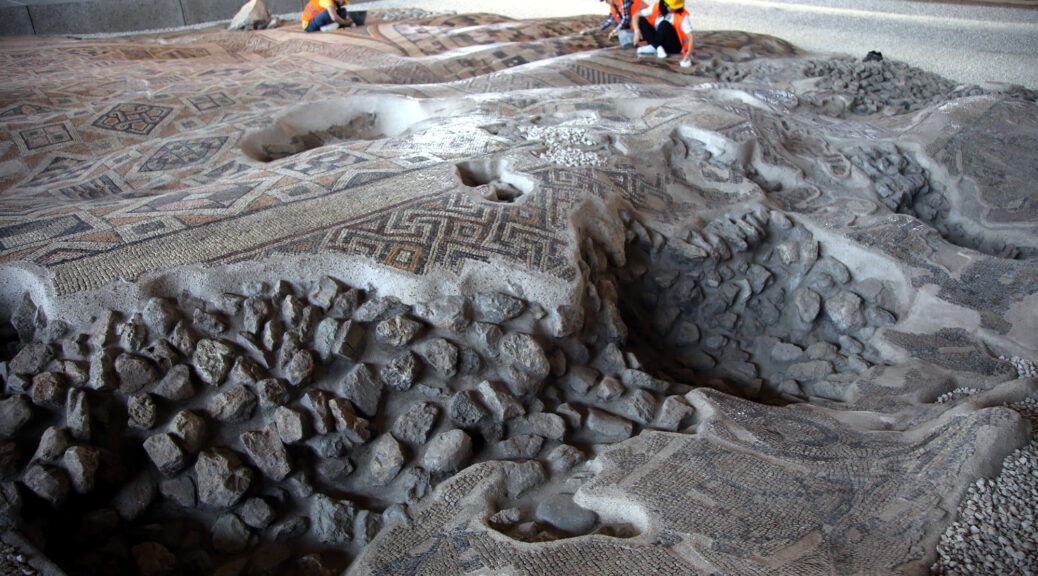Amazing World’s Largest Mosaic Piece Made By 13 Different Ancient Civilizations discovered At Museum Hotel Antakya in Turkey.
Normally, modern architecture and archaeology do not go hand in hand. Nevertheless, the two mixed in an unprecedented way when ancient ruins were found beneath what was to become Turkey’s Antakya Museum Hotel.
The Venture started when Turkish entrepreneur Necmi Asfuroğlu set about constructing a luxurious hotel in downtown Antioch on nearly 200,000 square feet of land.
His south-eastern land is rooted in history and is located close to St. Peter’s church, the iconic pilgrimage site.
As his team started digging for a cellar, a number of archeological remains were discovered below the site dating back to the 3rd century B.C. and included traces from 13 different civilizations.
Asfuroğlu still wanted to build his hotel but could not compromise the ruins he had discovered, so he brought in Emre Arolat Architecture (EAA) and the firm’s New York director, Özge Ertoptamış.

“We were excited by the opportunity to do something that has never been done before,” said Ertoptamış. “But we also had our doubts whether something could actually be done around the exquisite findings.”

EAA’s outlook changed when the firm discovered an area within the site where there were no ruins. That’s because it was the former location of the Parmenius Creek riverbed.
“That is the point where we had the idea, that we could build something, not in it, but above it, by supporting the structure on minimal points where there are no ruins,” said Ertoptamış.
EAA now had a plan to marry two different typologies — a public museum where archaeological preservation could continue and a private hotel.
Ertoptamış explained, however, the design was constantly evolving and took about three years. She told BBC about an incredible discovery when they were digging for a well, which forced her team to rework their calculations.

“There are 66 columns that the building is rising on, and each point is calculated to be on a spot with no ruins, and there are wells to support each of the 66 pillars that are dug underground by hand,” said Ertoptamış.
“At one point, however, there was a discovery of a great mosaic in a location where we were going to place a column.”
The mosaic they found dates all the way back to the second century A.D. and includes exquisite panels with a myriad of mythological figures.

“We had to redo all of our calculations and find a new place for the pillar, but it was worth it because it is one of the most exquisite pieces in the collection,” said Ertoptamış.
Ertoptamış explained that while her team ran into challenges, the project and history inspired her.
“The building is a product of today, a product of the present, but within it, you are always living together with history in an unprecedented way, and that is the most challenging and rewarding part of this project,” said Ertoptamış.

